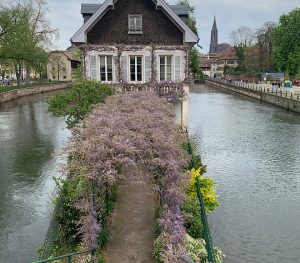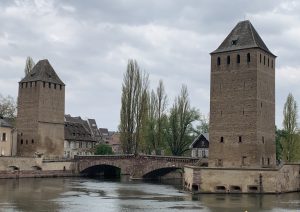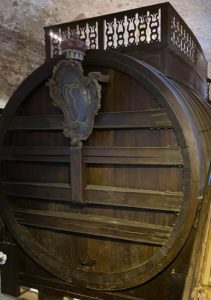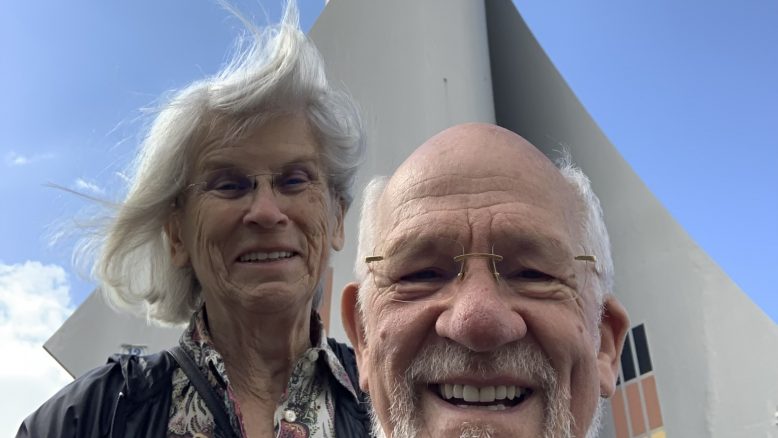Leaving the junction of three countries (Driehoek) and moving along the Rhine River it would be simpler to focus on the historical series of castle defenses (a way the governing body exerted power or control over people and ships trafficking in the waterways) but the digression would miss the point. Germany, France and Switzerland meet at a point in time and space. The shared taxation systems, the shared/unshared currency and their integrated economic systems have their roots in the rivers they share. The fees between castle stations and the moats that defended them from mauraders are the hallmarks of history. The chains drawn below the water-line to extract taxes from the merchant ships were more than a hazard.

The colour fueled wisteria colonnade masks the way to a tax collectors residence. To pass through the gate, raise the drawbridge or even get a ship traffic report, required a payment to the local agent.

The tower flow controls could be activated to extract fees (taxation) from the profiteering merchants. However the most visible mark carved into the history of government taxation was the requirement of all local grape growers to deliver liters of new wine to the government agent. This vas was the largest solid oak barrel ever built and each fall vintners would deliver their required wine. (This may not necessarily have been the best quality nor the most alcoholic) The wine was redistributed as “drinking” water to replace the disease carrying waters drawn from local wells. The size of the Vat and the governors role in its collection likely was the first initiation of the term VAT TAX. Later iterations have euphemized this into value added tax.

